You are here
Photo tour for flamingos in Korgalzhyn Nature Reserve.
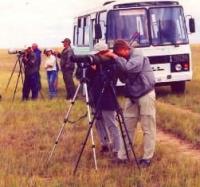
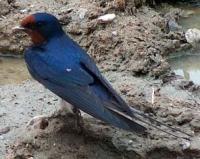

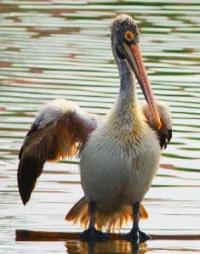
Ornithological tours in Korgalzhyn Nature Reserve.
“Who teaches birds to find their way,
Fly in the night, fly in the night on the stars?
And there are no networks to block their path
To long-forgotten nests.
Did love call them on the road?
She called me on the road, where is summer so short?
Why do they fly from eternal warmth, from eternal warmth? -
I won't know about this."
Larisa Rubalskaya.
Short description of excursion route from Astana to Korgalzhyn and Korgalzhyn Nature Reserve:
Astana - Korgalzhyn highway - Akmol village - Korgalzhyn village - Korgalzhyn lakes - Karazhar ornithological base - Zhumay village - Astana.
Distance of route: 419 km.
Season: May - October.
Best time for excursion: mid-April to mid-June.
Detailed excursion program to Korgalzhyn lakes:
Ornithological tours in Korgalzhyn Nature Reserve.
Trip to Korgalzhyn Nature Reserve.
Day 1. Astana – Karazhar ornithological base (199 km).
Transfer: Astana - Akmol village (formerly Malinovka) - Sabyndy village - Zhanteke village - Korgalzhyn settlement (127 km).
Our route from Astana lies to the southwest. We pass several villages on the way to the administrative center of the Korgalzhyn district. In the village of Akmol, which we will meet on our way, there is a museum and memorial complex “Alzhir” (Akmola camp for the wives of traitors to the Motherland).
On the territory of the museum complex there are monuments, sculptural and architectural compositions, memorial plaques, and a museum building. On the eastern side, in front of the village of Korgalzhyn, there is the Dudarai stele.
The stele was erected in honor of the Honored Artist of the Kazakh SSR Maria Egorovna Rykina (pseudonym Mariyam Zhagorkyzy) (1887 - 1950), who went down in the history of Kazakh music as the author of the touching autobiographical song “Dudaray”, which sings about the love of a Russian girl to a Kazakh guy.
On the Dudarai (Dudar-Ai) stele, words from a song - a hymn of love - are immortalized. And the stele is called here simply and affectionately - “Mariam”. 1.5 kilometers to the east and slightly north of the Dudarai stele is the Botagai mausoleum (Kazakh Bytygai).
An ancient legend about the master builder, the poor giant Bytygai, is associated with the mausoleum. Bytagai had such strength that he could jump over the Nura River with two logs in his armpits. Arrival in the village of Korgalzhyn, visit to the office of the Korgalzhyn Nature Reserve, the visitor center “Bird Paradise”. Lunch in a cafe or in a guest house.
Transfer: Korgalzhyn village - Birlik village - Nura river - Kanykey mazar (12 km).
Our path from the village of Korgalzhyn lies northwest to the village of Birlik. Immediately after the village we cross the bridge over the Nura, soon we are in the village of Birlik, from here we move along the right bank of the Nura River, along the way we make stops in picturesque places on the high bank of the river.
It is necessary to pay attention to the steep banks of the Nura, which are completely covered, like spongy cheese, with nesting burrows of shore swallows (Riparia riparia). Soon we are at the Kanykey mazar, which is located in the northern part of the ancient cemetery on the right bank of the Nura River.
Mazar Kanykei dates back to the XVIIth century. The mazar is associated with a sad legend about a difficult period in the history of Kazakhstan - the Kazakh-Dzungar wars of the XVIIth - XVIIIth centuries. The 15-year-old daughter of the khan, the beautiful Kanykey, went on one of the military campaigns undertaken by the Kalmyks.
However, the Kalmyks, having been defeated by the Kazakhs, were forced to retreat. During the retreat, the galloping horse Kanykey stumbled, and the khan's heiress died.
Transfer: Kanykei mazar – Orkendeu village – Sholak lake (15 km).
After the Kanykei mazar, the path lies south through the village of Orkendeu, which is the administrative center of the Amangeldy rural district. The village is located at an altitude of 309 meters above sea level, in the central part of the region on the left bank of the Nura River.
Having reached the village, we turn to the southeast and soon after 3.5 kilometers we will see Lake Sholak. Along the eastern shore of the lake in the reed jungle, different species of birds feed and rest: whooper swan (Cygnus cygnus), gray goose (Anser anser), Dalmatian pelican (Pelecanus crispus), black-headed gull (Larus ichthyaetus), (Phalacrocorax carbo ), (Aythya ferina), (Netta rufina).
Our path lies along the eastern shore to the northern part of Lake Sholak. Here on the grassy bank, in the thickets of cattails, we will observe the nesting of a huge number of different birds, ecologically associated with water. Various species of waders, terns, gulls, ducks and grebes coexist peacefully here.
Transfer: Lake Sholak - Shubar Sor - Lake Zharsuat - Yesei Spit – Chek Point No. 1 - Karazhar ornithologist base (45 km).
From the northern part of Lake Sholak our path lies southeast to the Shubar litter. The area of the Shubar litter is 39.48 square kilometers, the length of the coastline of the litter reaches 38.58 kilometers. The Korgalzhyn Nature Reserve and Lake Teniz are the world's northernmost breeding colony of flamingos.
This bird lived here back in the Paleogene, when the entire Tengiz-Korgalzhyn depression was covered by the Tethys Sea. Flamingo or redwing (Kazakh name “kzyl-kaz”) is unlike any other bird we know. The massive beak, as if broken in the middle, is surprising.
The body is dense, tightly knit, like a goose, the neck is thin, long, curved in the shape of a question mark. This is one of the longest-legged birds in the world: standing on the ground at full height, the redwing reaches a height of one and a half meters.
We will move along the western shore of Sor Shubar. Here we will meet flamingos (Phoenicopterus roseus), (Tadorna tadorna), (Anas acuta), and white-headed duck (Oxyura leucocephala). The eastern part of Shubar borders the western shore of Lake Zharsuat.
The area of Lake Zharsuat is 11.36 square kilometers. The length of the lake's coastline reaches 13.33 kilometers. We will move north along the eastern shore of Lake Zharsuat, thus reaching the northern tip and turning northwest to the Yesei Spit Bay.
The Eseyskaya Spit Bay stretches along the eastern coast of Lake Isey for 4.3 kilometers, the greatest width in the southern part of the bay reaches 365 meters, in the northern part 450 meters. The area of the bay is 2.34 square kilometers, the length of the coastline reaches 10.9 kilometers.
On the eastern shore of the bay there is an ancient cemetery with swollen and crumbling mazars and graves. In spring, more than a million waterfowl alone fly through lakes Tengiz and Korgalzhyn, not counting several million waders.
Of significant interest is the summer arrival (for molting) to the Tengiz-Korgalzhyn lakes of thousands of flocks of lamellar-billed ducks (geese, swans, dabbling and diving ducks) and some waders (rukhtans, round-nosed phalaropes), gathering here from Northern Kazakhstan, Western and partly Eastern Siberia.
Large flocks of waterfowl and semi-aquatic birds gather on the Yesei Spit almost all summer. The lake also attracts with its variety of vegetation. In the coastal part, spherical bushes of (Nitraria schoberi) grow in abundance.
In early May, significant areas of the steppe along the route are covered with (Tulipa schrenkii) and (Tulipa patens). Here you can also see marmot (Marmota bobak), (Vulpes corsac), badger (Meles meles), wild boar (Sus scrofa).
Soon we reach the main road, on which Check Point No. 1 of the reserve is located, go through formalities and further move to the Karazhar ornithological base (14.6 km). On the way to Karazhar, our path passes along the northern tip of Lake Isey. Arrival in Karazhar, accommodation in guest houses, dinner, overnight.
Day 2. Ornithologist base Karazhar – Astana (220 km).
Breakfast. Transfer: ornithologist base Karazhar – Uzun saline land (22 km).
From Karazhar, for 5 kilometers, our path will lie along the western coast of Lake Isey. About 5 kilometers after Karazhar, to the west, 1.5 kilometers from the road, is the Tuz salt marsh. We reach the northern end of Lake Isey and from here our path goes along the canal to the northwest, we reach the bridge over the canal and turn northeast to Uzun saline land.
We will examine the steppe and coastal fauna on the western side of the Uzun saline land, which borders on the channels of the Kalmykty salt marsh. From here we move north to Lake Aktailak, from which we turn east to the salty lake Shalkar.
Here we will meet demoiselle crane (Anthropoides virgo), white and gray herons, if you are lucky you can (Otis tarda) and (Tetrax tetrax). On the coast of salt marshes and lakes, you can meet the (Bufo viridic), for which this territory is the northernmost border of its habitat, and the sharp-faced frog (Rana arvalis), for which this territory is the southernmost border of its habitat. Encounters in the steppe with steppe vipers (Vipera ursinii.
Transfer: Uzun saline land – lake Shalkar (10 km).
In the vicinity of Lake Shalkar, there is a special group of plants that have adapted to life on highly saline soils. These are the so-called halophytes, or succulents: Salicornia europaea, sarsazan (Halocnemum), sweda, or Sodnik, or Shvedka (Suaeda), Kermek Gmelin (Limonium gmelinii), types of solyanka - solyanka (Salsola), as well as the Schober saltpeter shrub (Nitraria schoberi) aktken.
Their thick, fleshy leaves and stems always contain a reserve of water, which is slowly consumed during the dry season and replenished when it rains. In addition, they are characterized by a very slow pace of development.
Halophytes bloom, as a rule, at the end of summer. Solyankas change their color throughout the season - from dark green in spring to bright red in late autumn, when they form continuous blood-red lawns along the shores of the lake.
Among them there are individual green, orange or purple bushes. Here and there you can see the gray stems of wormwood and the silvery leaves of quinoa. In May and June, large concentrations of northern waders are found in these places: (Calidris alpina), (Calidris ferruginea), (Phalaropus lobatus), (Philomachus pugnax), (Himantopus) uzinsirak.
Transfer: lake Shalkar – salt marsh Kyndykty (23 km).
To Kyndykta we will drive through the steppes, where perennial grasses, mainly xerophytes, predominate. The vegetation here is represented by feather grass with an elegant thin stem and a dense root system that goes into the ground to great depths, where there is precious moisture.
Narrow and hard leaves use this moisture sparingly. Feather grass steppes are sung in tales, legends and songs of the Kazakh people. In the Korgalzhyn steppes, feather grass grows together with other xerophytes - (Festuca valesiaca), (Koeleria), salt marsh grass, or biyurgun (Anabasis salsa), (Atriplex cana) (Kazakh Kokpek), ferula (ferula), wormwood.
There are several wormwoods here: (Artemisia vulgaris), (Artemisia pauciflora Web.), (Artemísia absínthium), (Nitraria schoberi), (Artemisia campestris), (Artemisia dracunculus), etc. These are background views of the protected steppe. After a May thunderstorm, among the bouquet of smells, the tart aroma of wormwood is especially strong.
Transfer: Kyndykty salt marsh - Saumalkol lake - Zhumay village and Zhumay lake (15 km).
On these lakes, along with conventional waterfowl and near-water birds, a rare red -blooded look feels good - (Oxyura leucocephala), (Tadorna Ferruginea), a large white heron (Egretta alba). Nearby there are marine relict species: the Red Book species black-headed gull - Larus ichthyaetus (several hundred birds), Larus genei (several hundred birds), blackeye - Sterna caspia and sea plover - Charadrius alexandrinus.
When moving from Lake Saumalkol to the village of Zhumay we will meet: (Melanocorypha yeltoniensis), (Melanocorypha leucoptera), (Circus macrourus).
Transfer: Lake Zhumay – Korgalzhyn village (23 km).
Arrival in the village of Korgalzhyn, transfer to Astana (127 km). Arrival in Astana, end of the excursion.
Preliminary Checklist of the Birds in Korgalzhin Reserve.
Dalmatian Pelican (Pelecanus crispus),
Spoonbill (Platalea leucorodia),
Flamingo (phoenicopterus roseus),
Ruddy Schelduck (Tadorna ferruginea),
Red-crested (Netta ruffina),
Ferruginous Duck (Aythya nyroca),
Whooper Swan (Cygnus cygnus),
White-headed Duck (Oxyura leucocephana),
Mute Swan (Cygnus olor),
White-fronted Goose (Anser albifrons),
Common Crane (Gtus grus),
Demoiselle Crane (Anthropoides virgo),
Been Goose (Anser fabalis),
Little Bustand (Tetrax tetrax),
Red-breasted Goose (Rufibrenta ruficollis),
Great Bustard (Otis tarda),
Caspian Plover (Charadrius asiaticus),
Common Schelduck (Tadorna tadorna),
Sociable Lapwing (Chettusia gregaria),
Great Black-headed Gull (Larus ichthya tus),
Black-winged Stilt (Himantopus himantopus),
Slender-billed Gull (Larus genei),
Saker Falcon (Falco chrrug),
Avocet (Recurvirostra avosetta,
Lesser Kestrel (Falco naumanni),
Marsh sandpiper (Tringa stagnalitis),
White-Tailed Eagle (Haliaettus albicilla),
Black – winged Pratincole ( Glareola nordmanni),
Caspian Tern (Hydroprogne caspia),
Griffon Vulture (Gyps Fulvus),
Black Lark (Melanocorypha yeltoniensis),
Black Vulture (Aegypius monachus),
Steppe Eagle (Aquila nipalensis),
White-winged Lark (Melanocopypha leocoptera),
Montagu’s Harrier (Circus pygargus),
Short-toed Lark (Calandrella cinerea),
Long-legged Buzzard (Buteo rufinus),
Yellow Wagtail (Motacilla Lutea),
Osprey (Pandion haliaetus),
Citrine Wagnail (Motacilla citreola),
Pied Wheataer (Oenanthe pleschanka),
Hoopoe (Upupa epops),
Turkestan Red-tailed Shrike (Lanius phoeniuroides),
Collared dove (Streptopelia decaocto),
Red-Headed Bunting (Embariza bruniceps),
Booted warbler (Hippolais caligata),
Paddyfield warbler (Acrocephalus agricola)
Grey-necked Bunting (Emberiza buchanani),
Twite (Acantis flavirostris),
Azure Tit (Parus cyanus),
Rose-coloured Starling (Sturnus roseus).
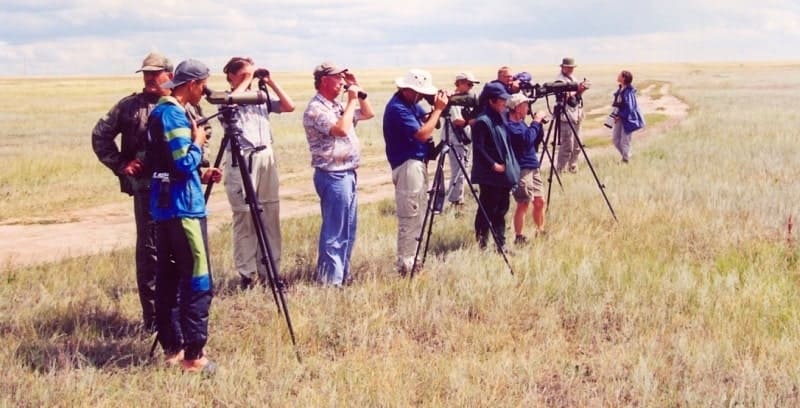
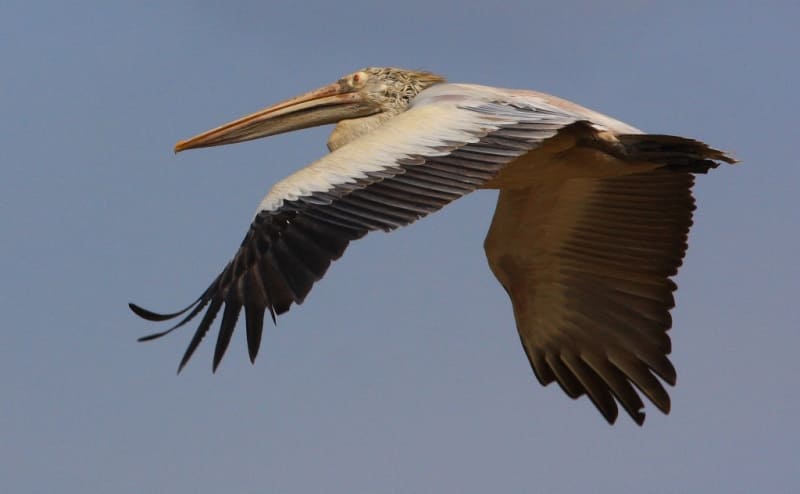
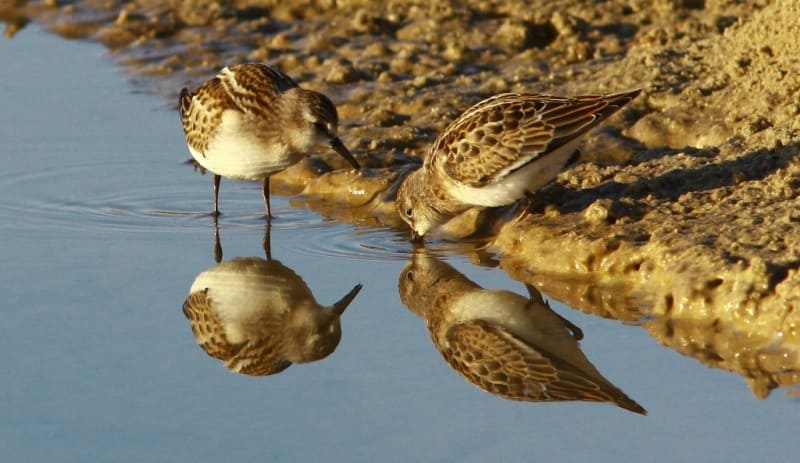

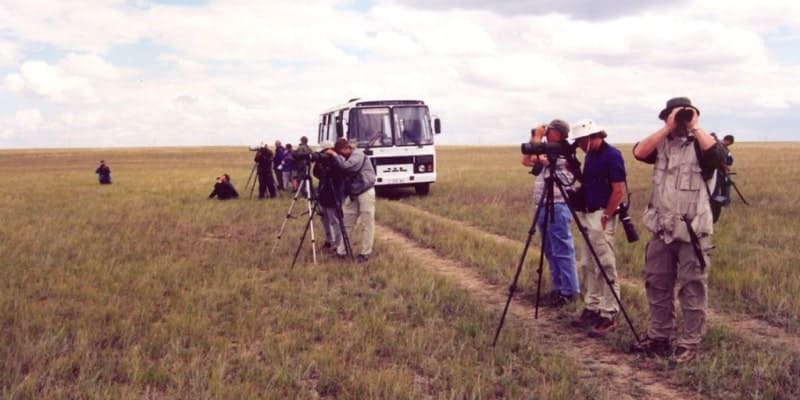
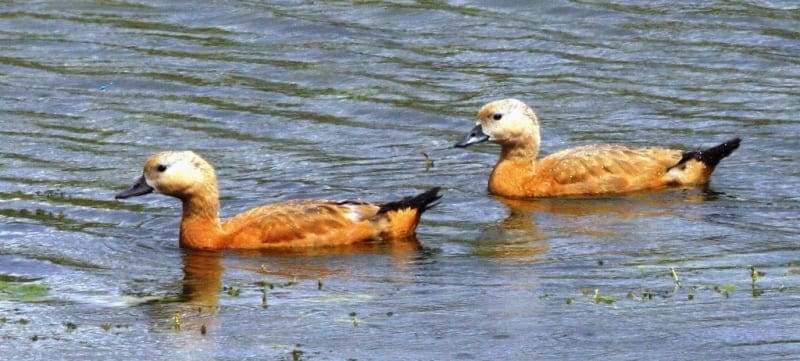
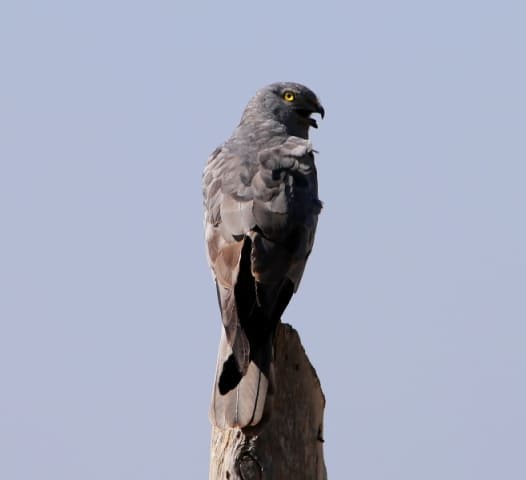

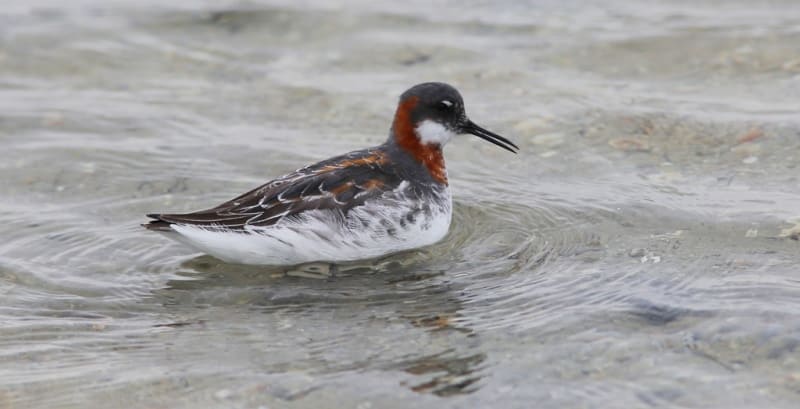
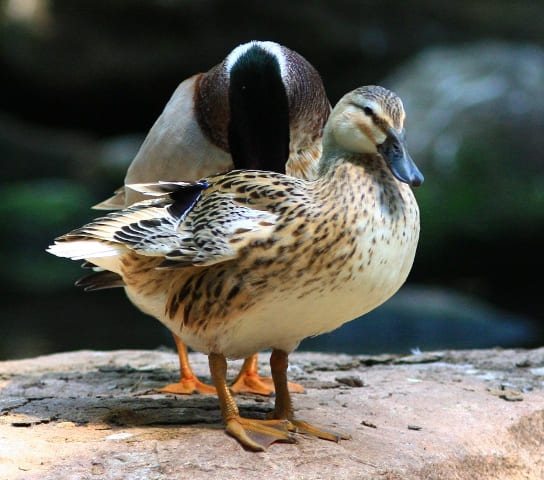
Note:
In heavy rain, the roads along the route are impassable.
Recommended clothing and equipment:
camouflage suit, optical instruments, repellent or mosquito net.
Note:
Author's program by Alexander Petrov. Copying and use of material only with the permission of the author.
Photos by:
Alexander Petrov.







